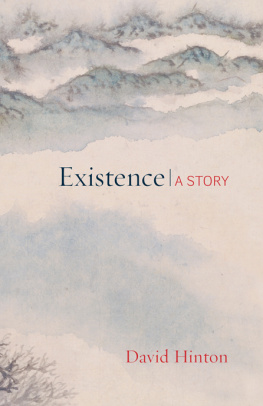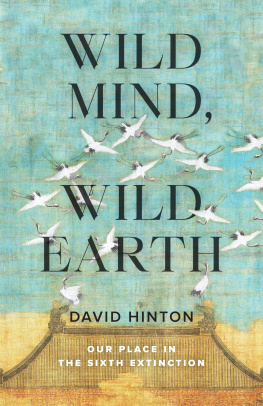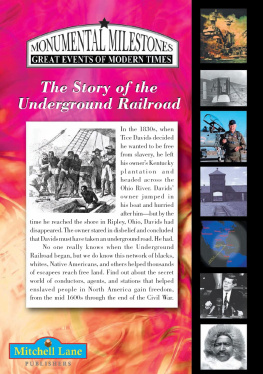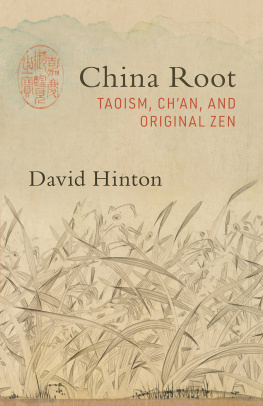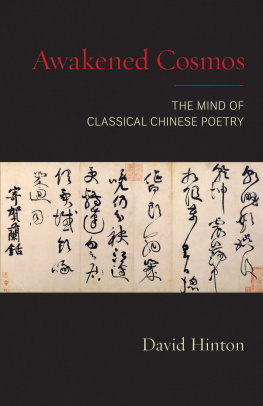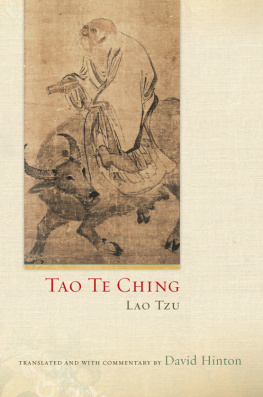Sign up to receive news and special offers from Shambhala Publications.

Or visit us online to sign up at shambhala.com/eshambhala.

Shih Tao (16421707): Broad-Distance Pavillion, from Illustrations to the Poems of Huang Yan-l (17011702).
Album of 22 leaves.
Palace Museum, Beijing
Existence
A STORY
David Hinton

SHAMBHALA
Boulder
2016
Shambhala Publications, Inc.
4720 Walnut Street
Boulder, Colorado 80301
www.shambhala.com
2016 by David Hinton
All rights reserved. No part of this book may be reproduced in any form or by any means, electronic or mechanical, including photocopying, recording, or by any information storage and retrieval system, without permission in writing from the publisher.
LIBRARY OF CONGRESS CATALOGING-IN-PUBLICATION DATA
Names: Hinton, David, 1954author.
Title: Existence: a story / David Hinton.
Description: First Edition. | Boulder: Shambhala, 2016
Identifiers: LCCN 2015047462 | EISBN 9780834840256 | ISBN 9781611803389 (pbk.: alk. paper)
Subjects: LCSH: Philosophy, Chinese. | ChinaReligion. |
Wisdom. | Shitao, active 17th century18th centuryThemes, motives. | Cosmology. | Ontology. | Consciousness.
Classification: LCC B5232 .H56 2016 | DDC 181/.11dc23
LC record available at http://lccn.loc.gov/2015047462

T HIS IS THE STORY of existence, and it begins with a painting. Like countless other paintings in the Chinese tradition, this painting by Shih Tao (see frontispiece) appears at first glance to show someone gazing into a landscape, an artist-intellectual accompanied by his attendant. But mysterious dimensions quickly reveal themselves, suggesting there is much more here than meets the eye. The poem inscribed on the painting describes a landscape that includes ruins of city walls and houses, abandoned orchards and gardens, but there is no sign of such things in the painting. The paintings visible landscape isnt realistic at all. It feels infused with mystery: depths of pale ink wash; black lines blurred, smeared, bleeding; mountains dissolving into faint blue haze. And theres so much empty space in the composition, so much mist and sky. This sense of empty space is expanded dramatically by the soaring perspective: the mountain ranges appearing one beyond another suggest the gazer is standing on a mountaintop of impossible heights. And he seems a part of that emptiness, his body the same texture and color as the haze suffusing mountain valleys. Finally, there is the suggestion that the image is somehow a rendering of the gazers mind, an interior landscape we may possibly share when looking attentively at the painting. Or perhaps that the gazer has returned to some kind of originary place where mountains are welling up into existence for the first time, alive and writhing with primeval energy? Perhaps both at the same time: an originary place indistinguishable from the gazers mind, and even indistinguishable from our own minds?
Theres mystery everywhere in this painting because it isnt a painting about someone gazing into a beautiful landscape, as it might appear. It is, instead, a painting about existence, about our open and immediate experience of existence itself. All of Chinese spirituality and art is grounded in this experience. Poetry, calligraphy, painting, Taoist philosophy, Chan (Zen) Buddhist practice: as we will see, they tell the story of existence, and at the same time, they are spiritual practices that return us to an immediate experience of existence as a cosmological tissue. Mountain landscape itself offered another form of spiritual practice, a practice that incorporates all the others and is the deep philosophical subject of Shih Taos painting.
Artist-intellectuals found their spiritual home in mountains, thought of mountains as their teachers, and so mountain landscape was the most natural site for the spiritual practices of artist-intellectuals. They lived as much as possible in cultivated reclusion among mountains, where they also built monasteries. They practiced Chan meditation among mountains, either alone at home or with companions in monasteries. They wandered mountains, often lingering on summits as in the painting. They dreamed mountains, and built their creative lives around them. Indeed, rather than an expanse of physical terrain, they saw in the wild forms of mountain landscape the very workings of the Cosmos.
Millennia of Chinese cultures spiritual and artistic insight, Shih Taos lifetime of landscape practice: if we could distill all of that into the moment portrayed in this painting (a moment we are invited to share, for we are meant to identify with the gazer, arent we?), it would look something like this: We walk to a mountaintop, face out across ridgeline beyond ridgeline, then close our eyes. We forget everything we know, all of the ideas and knowledge and assumptions about ourselves and the nature of things, all of the thoughts and memories defining us each as a center of identity. We turn to the empty darkness of pure awareness, which is all that remains after this practice of forgetfulness, and we inhabit the expansive space of that darkness.
Since its origins in the ancient Greek and Judeo-Christian traditions, mainstream Western philosophy has generally taken as its starting point the center of memory and speculative thought, that center of identity that we have just emptied away. Descartes radical skepticism, for instance, by which he stripped away everything that could be doubted until he found a beginning place: that which is incontrovertibly true. And what he found was thought and self-identity, the timeless Christian soul: I think, therefore I am. This kind of approach invested Western philosophy from the beginning with an assumption that consciousness is fundamentally different from the empirical realm of existence, an assumption that shaped every level of experience, as we will see; and that assumption led to a preoccupation with otherworldly metaphysics and the seemingly timeless verities of abstract ideas.
But Chinas ancient sages assumed that this immediate experience of empty awareness was the beginning place, that dwelling here in the beginning, free of thought and identity, is where we are most fundamentally ourselves, and also where deep insight into the nature of consciousness and reality logically begins. It is a place outside the normal human framework, and Shih Taos painting establishes this perspective in an extreme and literal sense: it describes a person isolated and far from home and civilization, standing near the ruins of an ancient city with its abandoned houses and gardens. But you can begin at the beginning anytime, anywhere. A simple room, for instance, morning sunlight through windows lighting the floor; a sidewalk cafe, empty wine glass on the table, trees rustling in a slight breeze, sunlit passersby; a routine walk through a park, late-autumn trees bare, rain clattering in fallen leaves.
Distilling that practice of forgetfulness further, eyes closed, forgetting and forgetting, emptying our minds completely, we turn to the empty darkness that is our own awareness in and of itself. We inhabit the expansive space of that darkness for a time, then open our eyes. We gaze out as if it were sight seeing for the first time, gaze with no expectations at all about the nature of consciousness and reality, wanting to see them as they are in and of themselves, free of all our tenuous human stories about them, our ideas and beliefs. This is, in a sense, the moment portrayed in the painting, and in it we encounter a revelation altogether unexpected and unimaginable: existence! Existence miraculously and inexplicably here when there might just as well be nothing! The sheer presence of materialityvast and deep, everything and everywhere!
Next page
